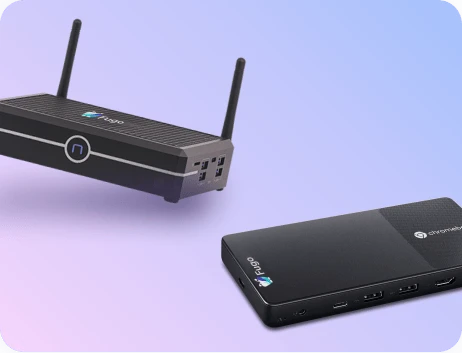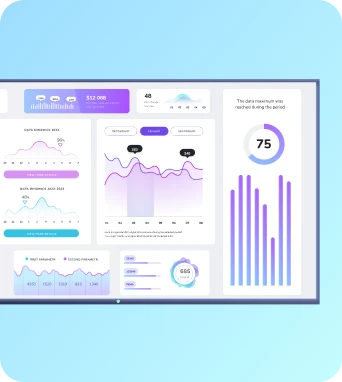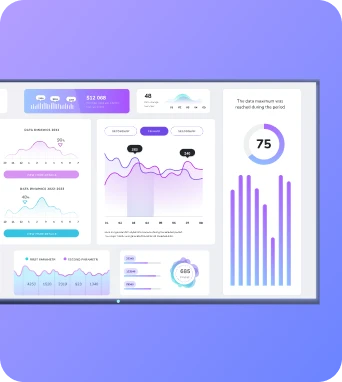Advantech digital signage players
Advantech digital signage players are purpose-built media edge devices and embedded PCs from Advantech designed to run signage applications, decode multimedia, and connect to content management systems. They provide reliable playback, network management interfaces, and hardware acceleration for video, making them suitable for TV dashboards and workplace displays.
What is Advantech digital signage players?
Hardware architecture and media acceleration in Advantech signage players
Advantech signage players are engineered around a compact industrial PC architecture that focuses on steady-state thermal performance, extended lifecycle components and multimedia acceleration. Typical devices include Intel-based SoCs or ARM processors with integrated GPUs and dedicated video decoding pipelines to offload H.264, H.265 and VP9 streams from the CPU. In practice this means a 4K display can be driven smoothly while the main processor manages the signage application and network stack. For example, a player configured with an Intel Core or Celeron CPU and Quick Sync hardware will allow a signage client like Fugo’s to render HTML5 dashboards, live RTSP feeds and web apps concurrently with minimal CPU overhead, preserving responsiveness for interactive overlays and scheduled playlist changes. Storage and I/O choices are also critical to real-world use. Advantech units frequently offer NVMe or SATA SSDs for fast read/write and survivable storage across power cycles, plus multiple Gigabit Ethernet ports, serial lines and USB for peripheral integration. These options enable scenarios such as attaching a local sensor for occupancy-triggered messages, or using a serial connection to a meeting-room controller for automated screen wake and input switching. At the firmware and OS layer, players run an embedded Linux, Windows IoT or Android build that exposes remote management interfaces—some deployments will use Advantech’s WISE-PaaS device management while others rely on Fugo-compatible agents that poll a central CMS, authenticate using a device token and fetch playlists over HTTPS. The combination of hardware acceleration, rugged components and flexible connectivity makes Advantech players suitable for medium and large signage estates where reliability and predictable multimedia performance are non-negotiable.
Deploying Advantech players at scale: provisioning, networking and monitoring
Deploying Advantech players across multiple sites requires a disciplined approach to provisioning and network design to ensure secure, manageable and resilient operation. Start by standardising a base image that includes the chosen OS, the signage client or agent, and a configuration profile for time synchronisation, logging and local cache policies. Many integrators automate imaging with network-based tools or Advantech’s management suite so new units boot, request a configuration and enroll in the CMS with minimal manual steps. Network considerations are essential: allocate static IPs or reserve DHCP entries, use VLANs to segment signage traffic from guest Wi-Fi, and configure firewall rules to allow outbound HTTPS to the CMS while restricting unnecessary inbound access. Quality of Service (QoS) rules that prioritise playback streams help prevent stuttering during peak periods, particularly where multiple devices share a constrained uplink. Monitoring and operation need to be planned from day one. Combine the CMS health checks with device-side logging and SNMP or cloud agent telemetry to capture metrics such as CPU, GPU utilisation, disk health and temperature. Schedule routine tasks like log rotation, cache pruning and daylight or weekend power schedules to reduce wear on storage and avoid unattended firmware changes. Common pitfalls include underestimating content bitrates—high-bitrate 4K video can saturate WAN links and cause playback issues—and neglecting to test fallbacks when the player loses internet connectivity. Use local caching strategies within Fugo or the signage client so scheduled playlists continue if the network is intermittent. For large estates, maintain a blue-green deployment plan for software updates and test firmware on a small subset of units before rolling out broadly, and set up alerting for failed heartbeats so a field technician can be dispatched before a display goes dark.
Final Thoughts on Advantech digital signage players
Keep the learning going...
Adaptive streaming
Adaptive streaming is a delivery technique that dynamically shifts video and audio quality based on real-time network throughput and device capability, switching between multiple encoded variants. In digital signage and TV dashboards it keeps Fugo players and similar clients playing smoothly by reducing buffering, optimising perceived quality and accommodating variable Wi‑Fi, wired and cellular links.
Advanced signage analytics
Advanced signage analytics is the practice of collecting, correlating and interpreting playback metrics, viewer counts, interaction events and environmental signals from digital displays to quantify engagement, measure campaign effectiveness and drive automated scheduling, content personalisation and device maintenance across signage networks.
AI-driven analytics
AI-driven analytics in digital signage applies machine learning, computer vision and statistical inference to automatically collect and interpret viewer behaviour, dwell time and contextual signals from displays and sensors. The processed insights drive content sequencing, audience measurement, dynamic personalisation and automated optimisation across TV dashboards and workplace displays managed by platforms like Fugo.ai.



